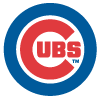The first regular-season edition of this column each year is in many ways the strangest one to write. On the one hand, we have actual baseball to cover. Instead of responding to merely rumors, the occasional transaction and injuries, we can react to homers, strikeouts and, unfortunately, also injuries.
On the other hand, while every exciting moment is even more thrilling this April following an extra-long and extra-stressful offseason, the phrase "small sample size" could never be more apt. We all know not to react too strongly to a three-game hot or cold streak in mid-August, but it can be harder to avoid the temptation when those three games are all we have to go on.
To put things in context, here are a few unusual three-game stretches that happened last year that you've almost certainly forgotten about, if you even noticed them at the time:
- Fernando Tatis Jr. went 1-for-14 with seven strikeouts from August 24 through August 26.
- Bryce Harper went 0-for-11 with seven strikeouts from May 19 through May 21.
- Kevin Newman went 7-for-11 with five doubles and four runs scored from August 12 through August 14.
- Elvis Andrus went 6-for-14 with a homer, a steal and four runs scored from July 6 through July 8.
Things get even weirder when you're talking about single starts for pitchers, which is all we have to go on right now:
- Corbin Burnes gave up four runs (three earned) on nine hits against the lowly Pirates on July 12.
- Kevin
The first regular-season edition of this column each year is in many ways the strangest one to write. On the one hand, we have actual baseball to cover. Instead of responding to merely rumors, the occasional transaction and injuries, we can react to homers, strikeouts and, unfortunately, also injuries.
On the other hand, while every exciting moment is even more thrilling this April following an extra-long and extra-stressful offseason, the phrase "small sample size" could never be more apt. We all know not to react too strongly to a three-game hot or cold streak in mid-August, but it can be harder to avoid the temptation when those three games are all we have to go on.
To put things in context, here are a few unusual three-game stretches that happened last year that you've almost certainly forgotten about, if you even noticed them at the time:
- Fernando Tatis Jr. went 1-for-14 with seven strikeouts from August 24 through August 26.
- Bryce Harper went 0-for-11 with seven strikeouts from May 19 through May 21.
- Kevin Newman went 7-for-11 with five doubles and four runs scored from August 12 through August 14.
- Elvis Andrus went 6-for-14 with a homer, a steal and four runs scored from July 6 through July 8.
Things get even weirder when you're talking about single starts for pitchers, which is all we have to go on right now:
- Corbin Burnes gave up four runs (three earned) on nine hits against the lowly Pirates on July 12.
- Kevin Gausman gave up six runs on eight hits in 4.1 frames against those same Pirates on July 24, striking out just two while walking four.
- Mitch Keller struck out eight Cubs in six scoreless innings on September 2.
- Matt Harvey allowed just a single hit in six scoreless frames against the Nationals on July 24.
With all that in mind, the goal for this week's column will be to avoid overreacting to similar outlier performances and instead focus on a smaller number of things that have more bearing on a player's fantasy value. For hitters, we're looking at things like lineup spots and role changes. For pitchers, we're focusing mostly on things like velocity changes (which you can keep track of here) and occasionally some outlier strikeout performances. For relievers, we also get to look at how managers are deploying their bullpens in actual games rather than merely how they suggest they'll do it in press conferences.
Of course, even while trying to stay disciplined and avoid overreactions, there are bound to be some misses at this very early stage. Just look at the first regular-season barometer of last season for one example. I can pat myself on the bat for writing that "we're set to get the full Shohei Ohtani experience this season," but I can't do that without also noting that I followed up my paragraph on Ohtani with one on Yermin Mercedes. Hopefully, the group below contains more Ohtanis than Mercedes, but it will inevitably take more than one weekend's worth of games to sort that out.
RISERS
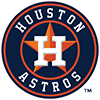 Alex Bregman, 3B, Astros: One area where I'm willing to give small-sample success a bit more weight is with players who came into the season with health concerns. Bregman wasn't fully himself last season, hitting a modest 12 homers in 91 games while missing time with quadriceps and hamstring injuries. He struggled to a .604 OPS in the playoffs, which may be due partially to a wrist issue, which required surgery in November. That wide variety of ailments combined with his down season at the plate raised his risk profile heading into this season, but he's done what he can through four games to minimize any concerns. He homered in each of the first two games of the season and recorded three multi-hit performances. That apparent health is vital for him to return to his previous dominance this season given his somewhat shaky pedigree as a slugger. No other qualified active hitter with a career slugging percentage north of .500 has a barrel rate as low as his 5.3 percent mark, so he really can't afford anything sapping his strength if he's to remain a genuine power threat.
Alex Bregman, 3B, Astros: One area where I'm willing to give small-sample success a bit more weight is with players who came into the season with health concerns. Bregman wasn't fully himself last season, hitting a modest 12 homers in 91 games while missing time with quadriceps and hamstring injuries. He struggled to a .604 OPS in the playoffs, which may be due partially to a wrist issue, which required surgery in November. That wide variety of ailments combined with his down season at the plate raised his risk profile heading into this season, but he's done what he can through four games to minimize any concerns. He homered in each of the first two games of the season and recorded three multi-hit performances. That apparent health is vital for him to return to his previous dominance this season given his somewhat shaky pedigree as a slugger. No other qualified active hitter with a career slugging percentage north of .500 has a barrel rate as low as his 5.3 percent mark, so he really can't afford anything sapping his strength if he's to remain a genuine power threat.
 David Robertson, RP, Cubs: The Cubs still haven't officially named a closer, but it seems very likely that Robertson is the guy. He's received the team's only save chance thus far, shutting down the Brewers in the ninth inning on Opening Day after Chris Martin finished the seventh. and Rowan Wick and Mychal Givens combined to get three outs in the eighth. The 37-year-old carries the "proven closer" label thanks to his 138 career saves, and if he looks to be anything close to that guy this season after throwing just 18.2 innings over the previous three years due to Tommy John surgery, the job should be his. It's not just about the past for Robertson, however, as it's not hard to make the case that he's a tier above the rest of the Cubs' ninth-inning options in the present as well. Here's how he stacks up according to the ATC projection system:
David Robertson, RP, Cubs: The Cubs still haven't officially named a closer, but it seems very likely that Robertson is the guy. He's received the team's only save chance thus far, shutting down the Brewers in the ninth inning on Opening Day after Chris Martin finished the seventh. and Rowan Wick and Mychal Givens combined to get three outs in the eighth. The 37-year-old carries the "proven closer" label thanks to his 138 career saves, and if he looks to be anything close to that guy this season after throwing just 18.2 innings over the previous three years due to Tommy John surgery, the job should be his. It's not just about the past for Robertson, however, as it's not hard to make the case that he's a tier above the rest of the Cubs' ninth-inning options in the present as well. Here's how he stacks up according to the ATC projection system:
| Pitcher | K% | BB% | ERA | WHIP |
|---|---|---|---|---|
| David Robertson | 26.6 | 9.2 | 3.88 | 1.25 |
| Chris Martin | 21.2 | 4.7 | 4.01 | 1.19 |
| Rowan Wick | 25.8 | 10.8 | 4.04 | 1.34 |
| Mychal Givens | 25.7 | 10.6 | 4.30 | 1.33 |
That sure looks like a clear choice to me, as Martin is the only one to beat him in any category but lags behind in whiffs by a wide margin. History, present talent and usage all point to Robertson being the guy.
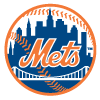 Tylor Megill, SP, Mets: I liked everything about Megill except for his role for much of the spring. His 26.1 percent strikeout rate and 7.1 percent walk rate in his 18-start debut last year foretold a big improvement on his 4.52 ERA, but he was stuck as the sixth starter after the team added Chris Bassitt. Jacob deGrom's shoulder injury moved Megill back into the rotation, and he actually wound up as the Opening Day starter against the Nationals after Max Scherzer had to be bumped back a day by a hamstring injury. Megill stepped up, striking out six across five scoreless innings while allowing three hits and no walks. One dominant outing doesn't make him a riser by itself, but it does when it comes with a fastball velocity of 96.2 mph. That's a tick and a half better than his average of 94.7 mph from last season and represents the best mark from any start thus far in his career. He was already a very interesting option based on his underlying numbers but could move into a new tier if the added velocity sticks.
Tylor Megill, SP, Mets: I liked everything about Megill except for his role for much of the spring. His 26.1 percent strikeout rate and 7.1 percent walk rate in his 18-start debut last year foretold a big improvement on his 4.52 ERA, but he was stuck as the sixth starter after the team added Chris Bassitt. Jacob deGrom's shoulder injury moved Megill back into the rotation, and he actually wound up as the Opening Day starter against the Nationals after Max Scherzer had to be bumped back a day by a hamstring injury. Megill stepped up, striking out six across five scoreless innings while allowing three hits and no walks. One dominant outing doesn't make him a riser by itself, but it does when it comes with a fastball velocity of 96.2 mph. That's a tick and a half better than his average of 94.7 mph from last season and represents the best mark from any start thus far in his career. He was already a very interesting option based on his underlying numbers but could move into a new tier if the added velocity sticks.
 Merrill Kelly, SP, Diamondbacks: Kelly struck out seven Padres in four scoreless innings in his season debut Friday, matching his second-highest total from last season. As I mentioned in the introduction, however, I wouldn't consider a starter to be truly a riser based on that alone. What makes Kelly's start particularly exciting was that his fastball averaged 93.3 mph, well above his 91.8 average from last season. That's tied with Megill for the fourth-largest velocity increase thus far among pitchers who were starters in both 2021 and 2022. Kelly has been a competent but rather bland starter since making his MLB debut as a 30-year-old in 2019, with his strong 6.6 percent walk rate in his first three years in the league offsetting a low 20.2 percent strikeout rate and leading to a 4.27 ERA. If the new velocity sticks around and brings an elevated strikeout rate with it, it's possible he could reach a new level in his age-33 campaign.
Merrill Kelly, SP, Diamondbacks: Kelly struck out seven Padres in four scoreless innings in his season debut Friday, matching his second-highest total from last season. As I mentioned in the introduction, however, I wouldn't consider a starter to be truly a riser based on that alone. What makes Kelly's start particularly exciting was that his fastball averaged 93.3 mph, well above his 91.8 average from last season. That's tied with Megill for the fourth-largest velocity increase thus far among pitchers who were starters in both 2021 and 2022. Kelly has been a competent but rather bland starter since making his MLB debut as a 30-year-old in 2019, with his strong 6.6 percent walk rate in his first three years in the league offsetting a low 20.2 percent strikeout rate and leading to a 4.27 ERA. If the new velocity sticks around and brings an elevated strikeout rate with it, it's possible he could reach a new level in his age-33 campaign.
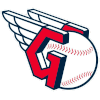 Steven Kwan, OF, Guardians: In what I believe to be an unprecedented move, I'm including Kwan as a riser for the second consecutive week. Kwan was a riser last week merely for his inclusion on the Opening Day roster, but excitement about him reached another level this week. The Guardians already seem committed to using him in a key role, as they shipped Bradley Zimmer to the Blue Jays to open up more at-bats and moved Kwan up to the second spot in the order as early as the second game of his career. He couldn't look more deserving of that role so far, as he's gone 8-for-10 with three walks, a hit by pitch and zero strikeouts through three games. Not only has he not struck out, he's yet to even swing and miss. While he's probably not the literal second coming of Tony Gwynn, nothing he's done so far is out of line with his scouting reports, which suggested that elite contact ability would be his path to success.
Steven Kwan, OF, Guardians: In what I believe to be an unprecedented move, I'm including Kwan as a riser for the second consecutive week. Kwan was a riser last week merely for his inclusion on the Opening Day roster, but excitement about him reached another level this week. The Guardians already seem committed to using him in a key role, as they shipped Bradley Zimmer to the Blue Jays to open up more at-bats and moved Kwan up to the second spot in the order as early as the second game of his career. He couldn't look more deserving of that role so far, as he's gone 8-for-10 with three walks, a hit by pitch and zero strikeouts through three games. Not only has he not struck out, he's yet to even swing and miss. While he's probably not the literal second coming of Tony Gwynn, nothing he's done so far is out of line with his scouting reports, which suggested that elite contact ability would be his path to success.
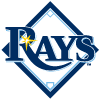 Josh Lowe, OF, Rays: Lowe wasn't included in my list of prospects set to debut on Opening Day last week, but he wound up joining the group after the Rays sent Austin Meadows to Detroit to clear a spot for him. Not only did he make the Opening Day roster, he found himself in the lineup for all three games over the weekend against the Orioles, reaching base five times on two hits and three walks and scoring three runs. Perhaps the most encouraging sign regarding his potential playing time this season is that he served as the designated hitter on Opening Day. It's rare for a player who has the ability to play center field to occupy that spot, but the Rays have an excellent defensive outfield in Randy Arozarena, Kevin Kiermaier and Manuel Margot. The fact that they wanted Lowe in the lineup nonetheless, even against the left-handed John Means, suggests they're quite high on him. He still comes with potential contact concerns but has plenty of power and speed, and it looks like he'll be given the chance to make his mark right away.
Josh Lowe, OF, Rays: Lowe wasn't included in my list of prospects set to debut on Opening Day last week, but he wound up joining the group after the Rays sent Austin Meadows to Detroit to clear a spot for him. Not only did he make the Opening Day roster, he found himself in the lineup for all three games over the weekend against the Orioles, reaching base five times on two hits and three walks and scoring three runs. Perhaps the most encouraging sign regarding his potential playing time this season is that he served as the designated hitter on Opening Day. It's rare for a player who has the ability to play center field to occupy that spot, but the Rays have an excellent defensive outfield in Randy Arozarena, Kevin Kiermaier and Manuel Margot. The fact that they wanted Lowe in the lineup nonetheless, even against the left-handed John Means, suggests they're quite high on him. He still comes with potential contact concerns but has plenty of power and speed, and it looks like he'll be given the chance to make his mark right away.
FALLERS
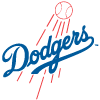 Julio Urias, SP, Dodgers: Urias had an awful season debut Sunday at Coors Field, giving up three runs on six hits and two walks in just two innings of work while failing to strike out a single batter. One poor start, especially one that came in Denver, isn't itself enough to make him a faller, but his came with a very concerning drop in velocity. Urias' fastball sat at just 91.7 mph, well below his career average of 94.0. The lefty himself blamed the cold weather for the velocity drop and said he felt fine, but a drop of that magnitude is hard to ignore. Urias already produced mediocre strikeout numbers for a supposed fantasy ace, with a career 24.2 percent strikeout rate even after a career-best 26.2 percent mark last season, and he could fall still further in that category if he doesn't have the same stuff this season. He also struggled to stay healthy early in his career. It's possible all worries here dissipate after another start or two, but his outing was probably the most concerning one of the season thus far.
Julio Urias, SP, Dodgers: Urias had an awful season debut Sunday at Coors Field, giving up three runs on six hits and two walks in just two innings of work while failing to strike out a single batter. One poor start, especially one that came in Denver, isn't itself enough to make him a faller, but his came with a very concerning drop in velocity. Urias' fastball sat at just 91.7 mph, well below his career average of 94.0. The lefty himself blamed the cold weather for the velocity drop and said he felt fine, but a drop of that magnitude is hard to ignore. Urias already produced mediocre strikeout numbers for a supposed fantasy ace, with a career 24.2 percent strikeout rate even after a career-best 26.2 percent mark last season, and he could fall still further in that category if he doesn't have the same stuff this season. He also struggled to stay healthy early in his career. It's possible all worries here dissipate after another start or two, but his outing was probably the most concerning one of the season thus far.
 Shane Bieber, SP, Guardians: Bieber's results were perfectly acceptable in his Opening Day start against the Royals, as he allowed one run on three hits in 4.2 innings, striking out four while not allowing a walk, but he earns a mention here after his fastball averaged just 90.7 mph. That's especially worrisome for Bieber for two reasons. First, he wasn't considered much of a prospect in the minors until his velocity spiked up, so it's fair to wonder what he'd be if it collapses again. More importantly, he missed a significant portion of last year with a shoulder injury, so the lack of velocity indicates he may still not be at full strength. He averaged 92.9 mph prior to the injury last year but fell to 91.2 mph in two late-season appearances. As with Urias, it's definitely possible Bieber's velocity ticks back up in his second or third start, but the context here is particularly worrying and gives reason to fear that Bieber might not be the pitcher who recorded a 2.92 ERA and a 33.0 percent strikeout rate from 2019 to 2021 this season.
Shane Bieber, SP, Guardians: Bieber's results were perfectly acceptable in his Opening Day start against the Royals, as he allowed one run on three hits in 4.2 innings, striking out four while not allowing a walk, but he earns a mention here after his fastball averaged just 90.7 mph. That's especially worrisome for Bieber for two reasons. First, he wasn't considered much of a prospect in the minors until his velocity spiked up, so it's fair to wonder what he'd be if it collapses again. More importantly, he missed a significant portion of last year with a shoulder injury, so the lack of velocity indicates he may still not be at full strength. He averaged 92.9 mph prior to the injury last year but fell to 91.2 mph in two late-season appearances. As with Urias, it's definitely possible Bieber's velocity ticks back up in his second or third start, but the context here is particularly worrying and gives reason to fear that Bieber might not be the pitcher who recorded a 2.92 ERA and a 33.0 percent strikeout rate from 2019 to 2021 this season.
 Robert Suarez, RP, Padres: The Padres declined to name a closer before Opening Day, but there were enough hints that Suarez was probably the guy, the fantasy community treated him as such. Over the three weeks prior to Opening Day, he had an NFBC average draft position of 297, 95 spots ahead of any other Padres reliever. His fantasy value in leagues without holds seemingly evaporated with the Opening Day trade for Taylor Rogers, however, as Rogers was officially named the closer shortly after the trade. It's possible the Padres turn to someone else against a run of righties in the ninth inning on occasion, as Rogers is a southpaw, but Suarez hurt his chances of being that guy with his disastrous MLB debut on Opening Night. He entered in a save situation but walked the first two batters he faced and hit the third, all of whom would come around to score. The Padres have a deep group of good, but not elite, righties in their bullpen, so it wouldn't be a surprise if someone like Pierce Johnson or Dinelson Lamet moves ahead of Suarez on the depth chart.
Robert Suarez, RP, Padres: The Padres declined to name a closer before Opening Day, but there were enough hints that Suarez was probably the guy, the fantasy community treated him as such. Over the three weeks prior to Opening Day, he had an NFBC average draft position of 297, 95 spots ahead of any other Padres reliever. His fantasy value in leagues without holds seemingly evaporated with the Opening Day trade for Taylor Rogers, however, as Rogers was officially named the closer shortly after the trade. It's possible the Padres turn to someone else against a run of righties in the ninth inning on occasion, as Rogers is a southpaw, but Suarez hurt his chances of being that guy with his disastrous MLB debut on Opening Night. He entered in a save situation but walked the first two batters he faced and hit the third, all of whom would come around to score. The Padres have a deep group of good, but not elite, righties in their bullpen, so it wouldn't be a surprise if someone like Pierce Johnson or Dinelson Lamet moves ahead of Suarez on the depth chart.
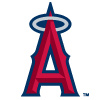 Jo Adell, OF, Angels: When the Angels released Justin Upton in early April, it looked like a show of faith in young outfielders Adell and Brandon Marsh. That could still be true eventually, but it's not how it's played out thus far. Reports indicate that Adell and Marsh are expected to platoon in left field while Taylor Ward handles right. Adell, a right-handed hitter, wouldn't see too many starts in that scenario. Ward is out for the start of the season due to a groin injury, but Adell has still found himself on the bench for two of the Angels' first four games, with Marsh and the unheralded Jose Rojas making three starts apiece. Adell certainly hasn't done anything with his limited at-bats to suggest he deserves more opportunities, going 0-for-9 with seven strikeouts. The 23-year-old is still very young and has plenty of potential, but he could be hard to hold onto in shallower leagues if his at-bats remain limited.
Jo Adell, OF, Angels: When the Angels released Justin Upton in early April, it looked like a show of faith in young outfielders Adell and Brandon Marsh. That could still be true eventually, but it's not how it's played out thus far. Reports indicate that Adell and Marsh are expected to platoon in left field while Taylor Ward handles right. Adell, a right-handed hitter, wouldn't see too many starts in that scenario. Ward is out for the start of the season due to a groin injury, but Adell has still found himself on the bench for two of the Angels' first four games, with Marsh and the unheralded Jose Rojas making three starts apiece. Adell certainly hasn't done anything with his limited at-bats to suggest he deserves more opportunities, going 0-for-9 with seven strikeouts. The 23-year-old is still very young and has plenty of potential, but he could be hard to hold onto in shallower leagues if his at-bats remain limited.













